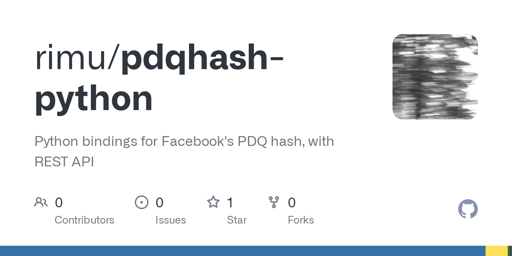from fxomt@lemmy.dbzer0.com to fediverse@lemmy.world on 17 May 2025 19:15
https://lemmy.dbzer0.com/post/44522419
cross-posted from: piefed.social/post/761023
PieFed uses PDQ hashing to generate a fingerprint of an image and can use that fingerprint to detect other posts that use the same or fairly similar images, for moderation purposes. Hashes are added to a block list which stops the image from being re-posted in future. Demo
PieFed does not generate PDQ hashes itself - it uses a separate service to do it. Several different instances could be using the same hashing service which will be more efficient than everyone running their own. When an image is being federated around the URL of it will be sent to the hashing service by multiple different fedi instances and only the first will be slow as all the subsequent requests will be served from a cache.
Get the code from github.com/rimu/pdqhash-python
By doing a GET request for yourdomain.tld/pdq-hash?image_url=url_to_image_to… you will receive JSON like this:
{
"pdq_hash_binary": "100100100011...",
"quality": 100
}
The quality score (0–100) indicates how well the image content supports a reliable perceptual hash.
Higher scores mean better contrast, edges, and texture in the image. PieFed accepts anything > 70.

threaded - newest
Is this similar to blurhash?
I’m certain you can achieve this with blurhash as well, and also get the benefits of blurhash.edit: nope, definitely not. Blurhashes are pretty small compared to PDQ hashes, it seems.